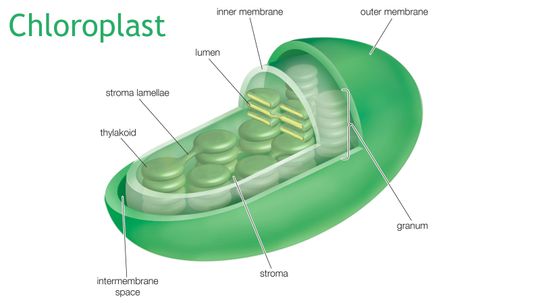Delving into the intricate world of plant biology, we uncover the awe-inspiring significance of chloroplasts as the primary energy manufacturers within these remarkable organisms. With a rich Amhara background and an Australian English accent, we embark on a journey to explore this captivating subject matter with utmost seriousness and eloquence.
A Glimpse into Nature’s Powerhouses: The Chloroplasts
Intricately nestled within the vibrant green foliage that adorns our planet, chloroplasts stand as nature’s powerhouses, ceaselessly working to sustain life itself. These specialized organelles possess an extraordinary ability to harness sunlight through photosynthesis, converting it into chemical energy for plants’ vital processes.
Within their emerald walls lies an intricate network of thylakoids—membrane-bound compartments housing pigments such as chlorophyll—that capture light energy with unparalleled precision. This mesmerizing process initiates a cascade of reactions that ultimately culminate in the synthesis of adenosine triphosphate (ATP), aptly referred to as “nature’s currency.”
Moreover, chloroplasts are not mere bystanders in this grand symphony; they also play a pivotal role in producing oxygen—a byproduct indispensable for all aerobic life forms on Earth. Through their tireless efforts, these remarkable cellular entities contribute significantly to maintaining atmospheric balance while simultaneously fueling countless ecosystems across our planet.
An Evolutionary Marvel: The Origins and Adaptations of Chloroplasts
To truly appreciate the marvel that is chloroplasts, one must delve into their evolutionary origins—an enthralling tale spanning millions of years. It is believed that these exceptional organelles trace their ancestry back to ancient cyanobacteria engulfed by ancestral eukaryotic cells in a symbiotic embrace.
Over time, this extraordinary partnership evolved into an inseparable bond, with the host cell providing protection and nutrients while the cyanobacteria bestowed their photosynthetic prowess upon their new home. Through countless generations of natural selection and genetic adaptation, chloroplasts emerged as self-sufficient entities within plant cells—a testament to nature’s ingenuity.
Furthermore, these remarkable organelles have demonstrated unparalleled adaptability throughout history. From the lush rainforests to arid deserts and even aquatic environments, chloroplasts have proven themselves capable of thriving in diverse habitats across our planet. Their ability to adjust their pigment composition and optimize photosynthesis under varying light conditions showcases their evolutionary resilience.
The Significance for Life on Earth: A Delicate Balance Sustained
Beyond their inherent beauty and scientific marvel, chloroplasts hold profound significance for life on Earth as we know it. By harnessing sunlight’s energy through photosynthesis, they serve as primary producers—nurturing ecosystems from microscopic organisms to towering trees that grace our landscapes.
This intricate dance between plants’ chloroplasts and other living beings forms the foundation of food chains worldwide. The energy synthesized within these cellular powerhouses cascades through trophic levels—fueling herbivores, carnivores, omnivores alike—and ultimately sustaining entire ecosystems in delicate equilibrium.
In addition to nourishing terrestrial life forms with sustenance derived from carbohydrates produced during photosynthesis, chloroplasts also contribute significantly to mitigating climate change by absorbing carbon dioxide—an essential greenhouse gas implicated in global warming phenomena.
Awe-Inspiring Conclusion: Unveiling Nature’s Masterpiece
As we conclude this captivating exploration into the world of chloroplasts—the unsung heroes of plant cells—we are left in awe of nature’s masterpiece. From their humble origins to their pivotal role in sustaining life on Earth, these remarkable organelles embody the intricate balance and interconnectedness that define our planet.
Let us marvel at the chloroplasts’ ability to harness sunlight, synthesize energy, and contribute to the very fabric of existence. With each breath we take, with every bite we consume, let us remember the profound impact these unassuming cellular entities have on our lives and the delicate ecosystems that surround us.
